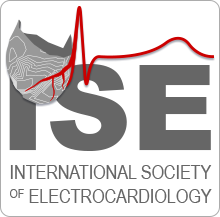Sharen Lee: Greetings! I am Sharen Lee from Hong Kong, a member of the International Society of Electrocardiology Young Community (ISE-YC). It is my honor to have the opportunity to interview Prof. Bayes de Luna from the Autonomous University of Barcelona.
Besides publishing over 190 publications in the field of cardiology over the course of his career, Prof. Bayes de Luna reported the increased risk for atrial fibrillation amongst patients with advanced interatrial block. The association was subsequently coined as Bayés syndrome by Prof. Baranchuk. Prof. Bayes de Luna has also contributed greatly to the education and promotion in the field of electrocardiology, including writing the textbook Clinical Electrocardiology, founding the Catalan Society of Cardiology, and being the former president of the Spanish Society of Cardiology, World Heart Federation and International Society of Cardiovascular Pharmacotherapy. Prof. Bayes de Luna, may you please tell us about your motivation underlying your active contribution in the education and promotion of electrocardiology?
Prof. Bayes de Luna: My aim as a teacher has always been to help people understand difficult problems. In my traineeship in the early 60’s I had some difficulties understanding a few aspects of electrocardiology and I was looking for solutions. I realized that, in spite of excellent research performed in the field of ECG, especially in North and South America (USA, NIC Ignacio Chávez from Mexico and Rosenbaum and Elizari from Argentina), there was lacking a comprehensive textbook that would explain the origin of the ECG curves based on the correlation dipole, vector, loop and projection of the loop in positive or negative hemifield of different leads. Therefore, as I was understanding ECG myself, I thought it would be a good idea to put all this knowledge in the form of a short book containing the answers to all the questions I had in my beginnings.
Sharen Lee: What was your most memorable memory during your career?
Prof. Bayes de Luna: I am fortunate to have lived through many memorable times in my career. I remember with emotion the first patient in whom we implanted a pacemaker in Spain in 1963, or the first one in whom we implanted an ICD in the early 80’s. it was also a very emotional day when our cardiac surgeon, Dr. Caralps, performed the first heart transplant of Spain in our institution. From a scientific point of view, I would like to mention 3 publications: i) The association of advanced interatrial block with atrial arrhythmias (Eur Heart J 1988; 9: 1112-1118), the origin of Bayes Syndrome; ii) The demonstration for the first time that colchicines may prevent recurrences of pericarditis (Circulation 1990; 82: 117-1120); and iii) The confirmation that in patients post-MI the R wave in V1 was due to lateral and not posterior MI (Eur Heart J 2015; 36: 959-964).
Another highlight of my career was the set-up of our Experimental Institute of Cardiology in St. Pau Hospital directed by Prof. Lina Badimon.
I also remember with great fondness when, during my term as President of the World Heart Federation (1997-1999,) we 1) organized the World Heart Day; 2) published the White Book of World Cardiology; 3) performed a memorandum of understanding how to fight against heart diseases in developing countries; 4) incorporated mainland China to the Society while retaining Nationalist China working together through their differences; and 5) converted the old International Society and Federation of Cardiology (ISFC) to the successful World Heart Federation.
At a more personal level, I enjoy returning with my wife María Clara, the mother of our 5 children to Vic, a medieval city inland Catalonia, where we have the family house for almost 2 centuries and where I used to visit patients until very recently. I am the fourth generation of doctors, and three of my children and one grand-child are also doctors, and one grandchild is on the way.
Sharen Lee: Could you tell us about an excellent ECG paper that you have read in the past year?
Prof. Bayes de Luna: In the past few years I have very much enjoyed reading the papers related to our current topic of research: The advanced Interatrial block and Bayes Syndrome. I have particularly enjoyed the publications on this topic from the ARIC and Danish cohorts confirming in a global population cohort what we have demonstrated in different clinical settings starting with the paper of O’Neal in the Am J Cardiol (2016; 117: 1755-1759).
Sharen Lee: What do you think about the future of electrocardiology and ISE? What are some upcoming opportunities and challenges?
Prof. Bayes de Luna: The future of electrocardiology is bright and its importance will be even more relevant in the XXI Century, especially if we achieve real automation of the ECG curve. My great wish would be that all physicians have the knowledge to understand the ECG curves and, thanks to that, have greater information about ischemic heart disease, sudden death, Brugada syndrome, AV block, advanced interatial block and … many others.
Sharen Lee: ISE-YC has been actively recruiting young talents who are interested in the field of electrocardiology over the recent years. What is some advice you would like to give to these young researchers/ clinicians?
Prof. Bayes de Luna: I encourage ISE to pursue stimulating teaching and research in electrocardiology. There are many aspects that yet remain to be explained from a diagnostic and prognostic point of view, as well as many other aspects that still have to be discovered… Therefore, young talents you have in the field of electrocardiology a great future in front of you… Embrace the opportunity.
Sharen Lee: Thank you for your time and expertise!

